#colorado potato beetle
Text
Finally finished this Colorado potato beetle! :D
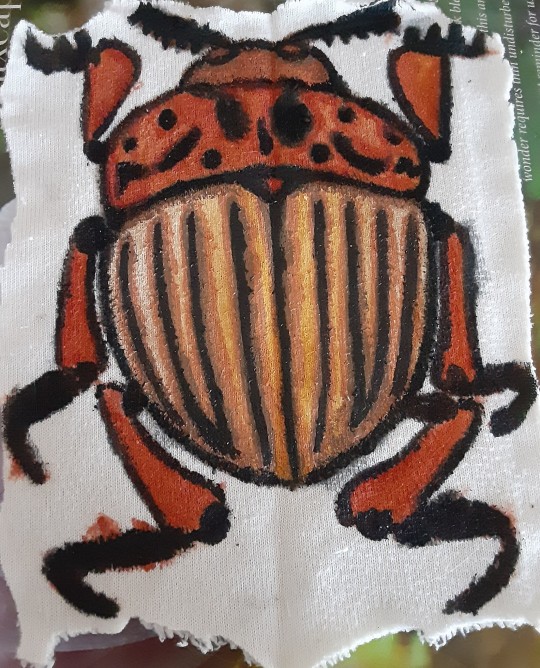
142 notes
·
View notes
Note
so sorry but the submissions aren’t working for me here have a nice beetle as compensation
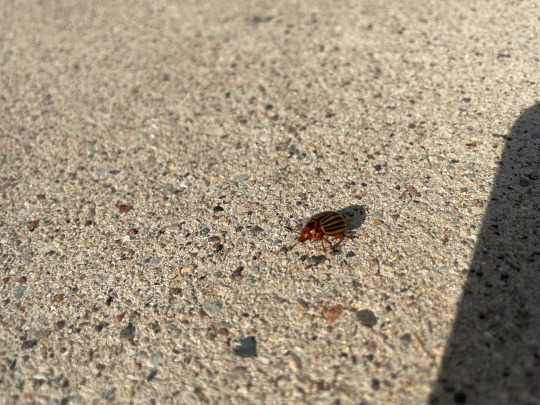
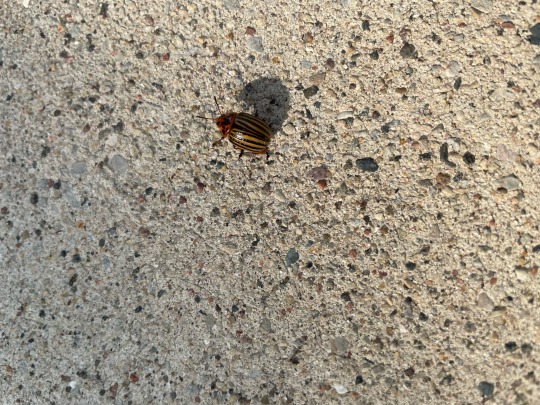
any ideas about this friend? found in the northern american midwest (Great Lakes region)
A very nice beetle indeed! They are a Colorado potato beetle
71 notes
·
View notes
Photo
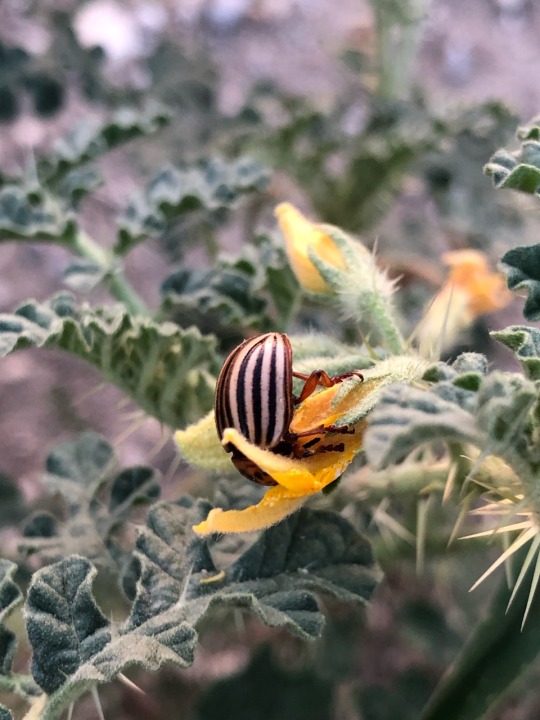

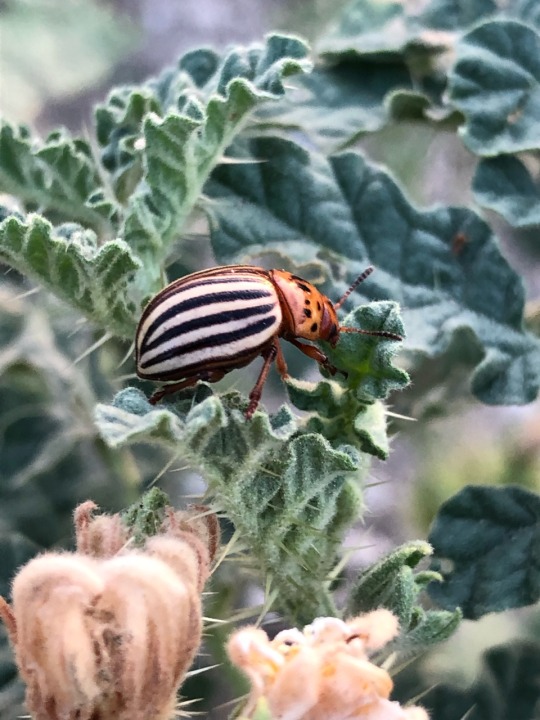
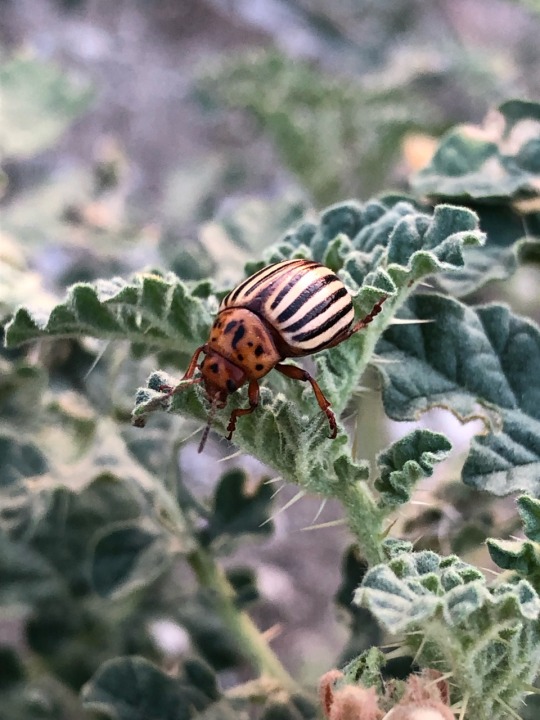


Not entirely confident wether I met THE Colorado Potato Beetle (Real) or their lookalike the False Potato Beetle; kinda leaning towards the latter, but woo! Cute little beasts munching on buffalo bur (not mine thankfully lol)
EDIT: to clarify - the reason I wasn’t sure was because I couldn’t decide wether that central stripe on these guys were actually brown, like it is on False Potato Beetles, or if the slight brown look was still within the range of natural variation for Colorado Potato Beetles. Having heard multiple people’s inputs I’m now leaning toward Colorado Potato Beetle (Real), thanks y’all!
#come to the 7/11 parking lot to see: beetle#Con stop yapping#bugs#insects#beetles#Colorado Potato beetle#false potato beetle#idk!
39 notes
·
View notes
Text
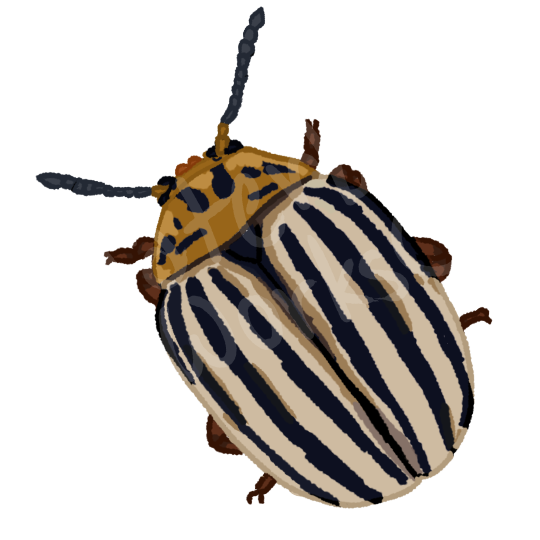
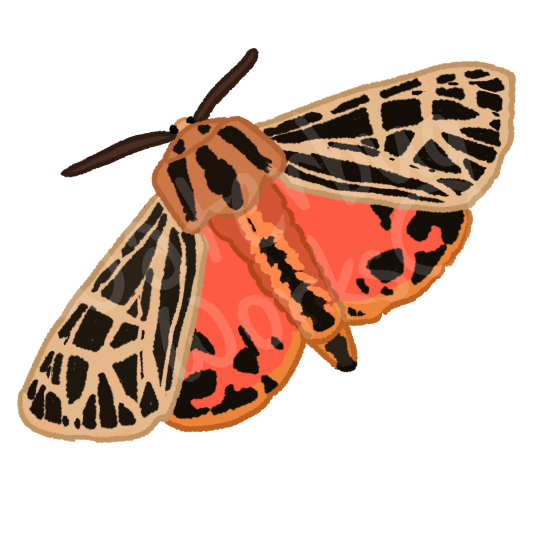

Colorado Potato Beetle (Leptinotarsa decemlineata) Parthenice Tiger Moth (Apantesis parthenice), and Spider Wasp (Priocnemis spp.)! My first wasp so far, I couldn't resist the blue. Slowly working myself up to spiders so I can draw them as they deserve! Bugs referenced from INaturalist with photos by brickman and ericgiles respectively, and the Spider Wasp from InsectIdentification.org.
#arthropod art#arthropods#bugs#insects#cute#Colorado Potato Beetle#Leptinotarsa decemlineata#Parthenice Tiger Moth#Apantesis parthenice#Spider Wasp#Priocnemis spp
3 notes
·
View notes
Text
Some of my “Blooper” insect photos lol
Felt like sharing.


(well, this one’s pretty good, a little out of focus)


#photography#insect photography#I have so many more tho but idk how much this could handle cuz the filesizes are pretty big#insects#bugs#macro photography#macronature#nature#tw insects#coleoptera#beetles#cockroach#blattodea#lepidoptera#moths#european rhinoceros beetle#colorado potato beetle#also filmed the colorado guy (she/her) laying eggs
37 notes
·
View notes
Text
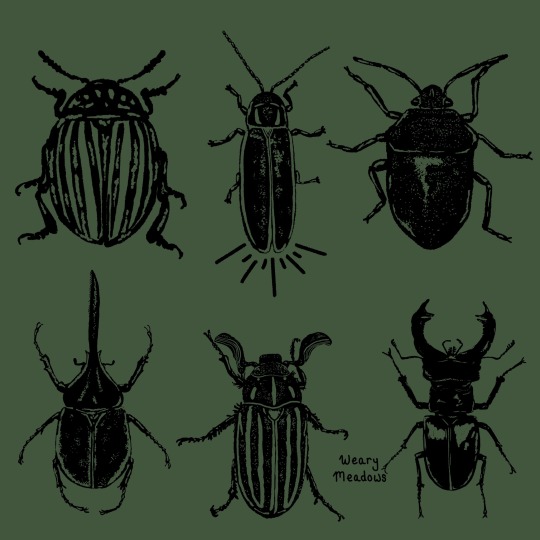
The entire beetle series I did
#art#drawing#artist on tumblr#illustration#artwork#ink#beetle#stag beetle#ten lined june beetle#June bug#jewel#jewel beetle#firefly#Colorado potato beetle#hercules#Hercules beetle#bug#entomology
2 notes
·
View notes
Text
Colorado potato beetle
It looks beautiful but can be a real plague, the Colorado potato beetle (Leptinotarsa decemlineata). It sports ten dark stripes on its back, hence the Latin name.
Originally from central Mexico, it was introduced in Germany in 1877 via shiploads of seed potatoes from the US landing in Rotterdam haven.
They are having fun with reproducing on my potatoes. Currently, there are only a few of them so I am still chill with the amount of leaves they eat.
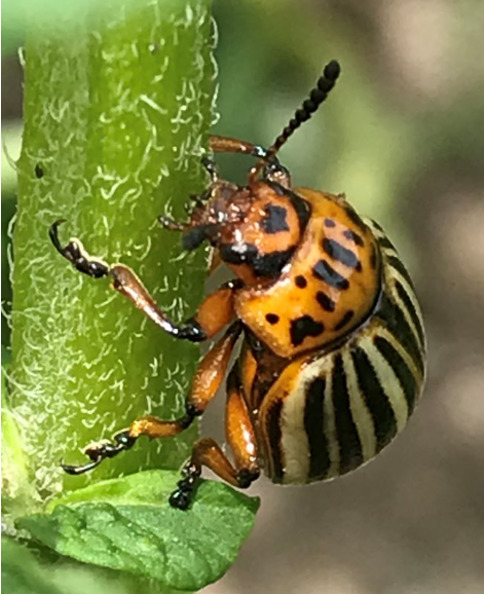
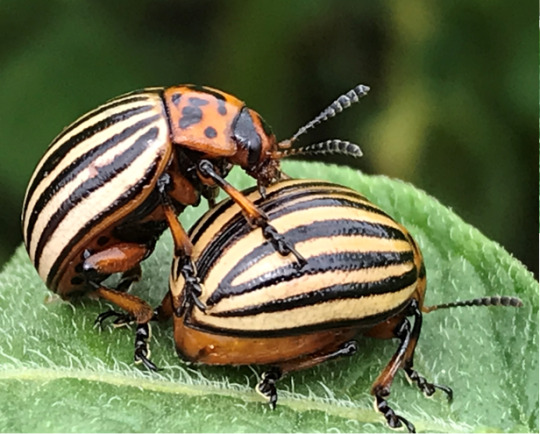
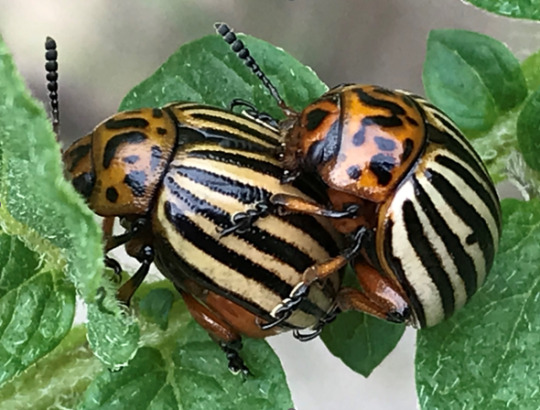
1 note
·
View note
Text
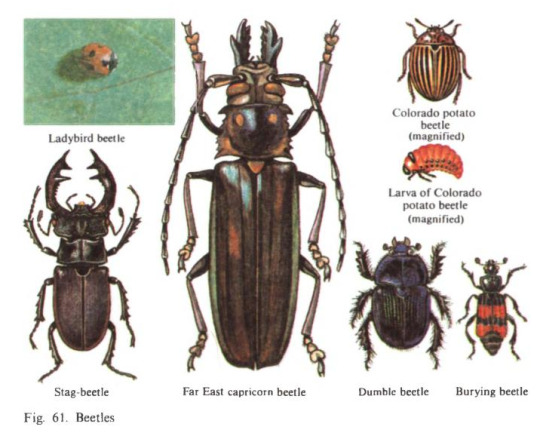
Zoology - Textbook for Schools. Edited by D. Naumov. 1985.
Internet Archive
#bugs#insects#beetles#stag beetles#capricorn beetles#colorado potato beetles#dung beetles#burying beetles
309 notes
·
View notes
Text
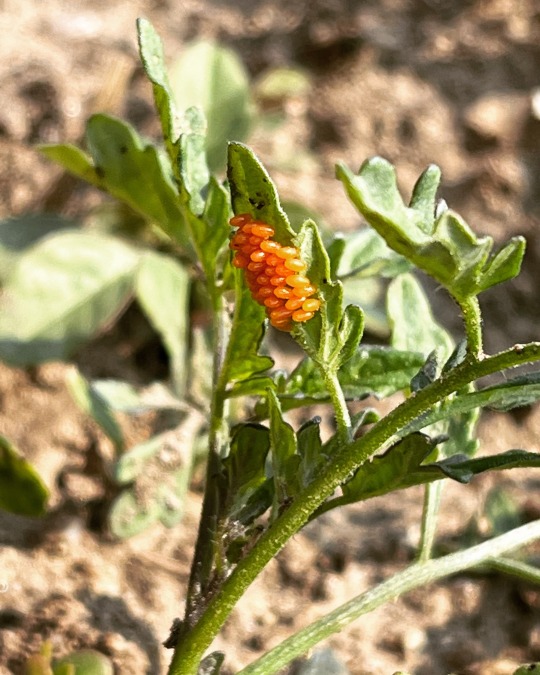
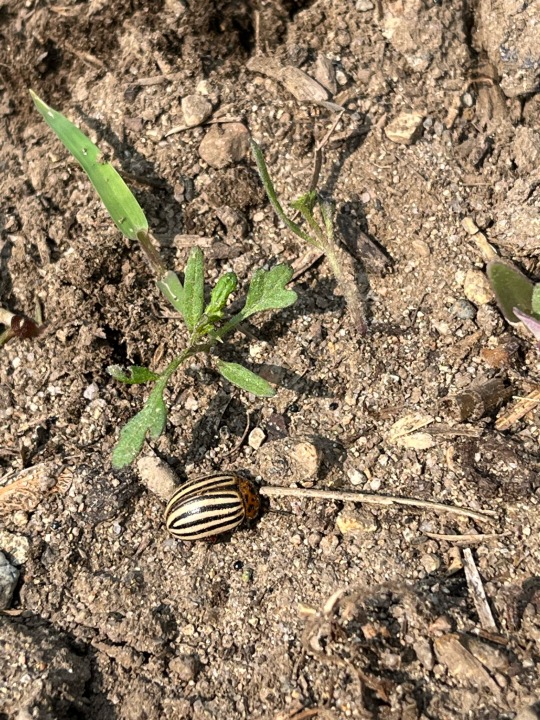
ENEMY SPOTTED *cocks gun*
#Colorado potato beetle strikes again#now we have to burn the whole crop of solanums!#lol jk we just squish the bugs#organic farming#farming#solarpunk#me
1 note
·
View note
Text
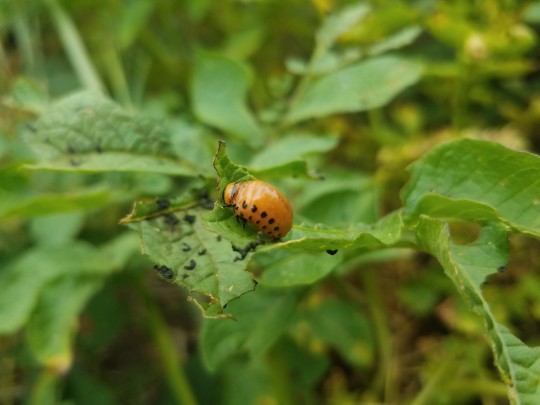
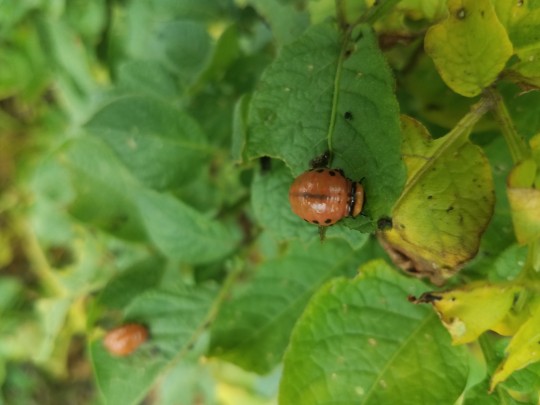
@telnaga submitted: who are these chubby boys feasting on this small section of a vegetable garden in ohio
Lil chunkers! Looks like Colorado potato beetle larvae :)
65 notes
·
View notes
Text

inat is the only website
12 notes
·
View notes
Text
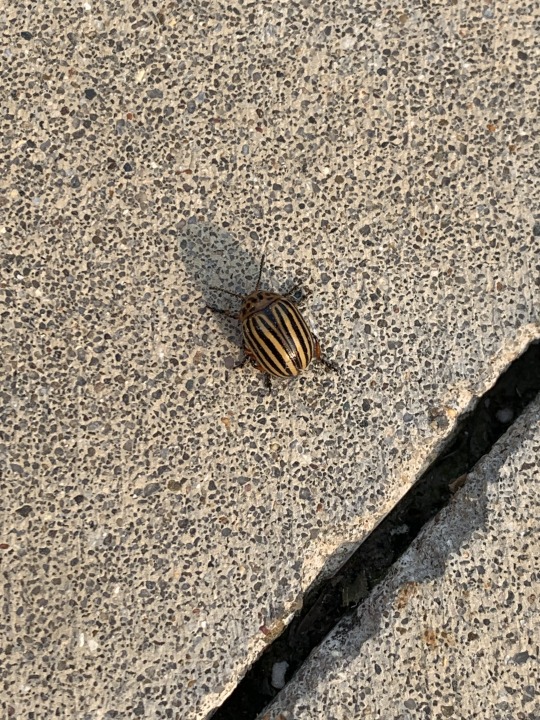
A Colorado Potato Beetle just sittin’ on the pavement. This striped fellow is indigenous to North America, and can be found in every state and province except Alaska, California, Nevada, and Hawaii—maybe it doesn’t like the weather there.
They have also established a sizable population in Europe and Asia thanks to the movements of humans and their vehicles. It’s surprising just how many hitchhikers the average boat has!
234 notes
·
View notes
Text
BJ DEFINITELY KNOWS EVERYTHING THERE IS ABOUT INSECTS/ BEETLES SPECIFICALLY !!

Here’s the words typed out:3
- he just has bugs w/ him constantly
-stumbles over words bc he gets so excited
- Juno hated when he did this so he was hesitant to talk about his interests at the Maitland/Deetz household at first— Lydia would encourage him bc she genuinely wanted to hear bug facts— now Bj rambles about bugs w/o hesitation
- Lydia & Bj go bug hunting often— she’ll photograph some bugs while he shares facts
- Bj try’s bringing bugs inside the house a lot (Charles hates this and makes him put them back)
I think his favorite beetles would be the ten-lined June beetle and the Colorado potato beetle(yes bc of the stripes) !!!
#beetlejuice#beetlejuice fanart#headcanon#fanart#lawrence beetlejuice shoggoth#artists on tumblr#goober#digital art#sketches#beetles#beetlejuice musical#insects
41 notes
·
View notes
Text
Doing a little bug spotting.
First, a milkweed beetle, more than a little lost in the garage:
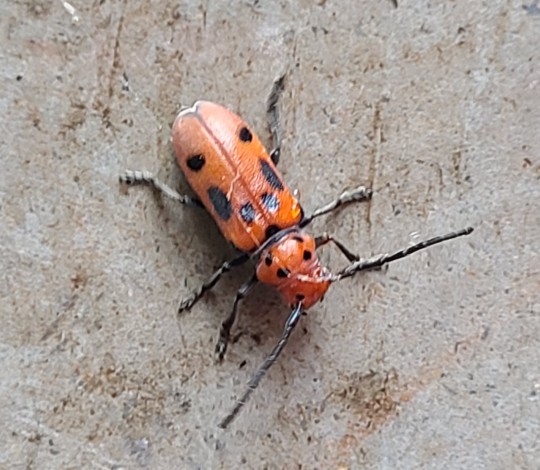
Then, a bad guy, like Historically Bad, the Colorado Potato Beetle, but he is so very dapper! Probably feeding on the nightshade growing up through the neighbor's fence.

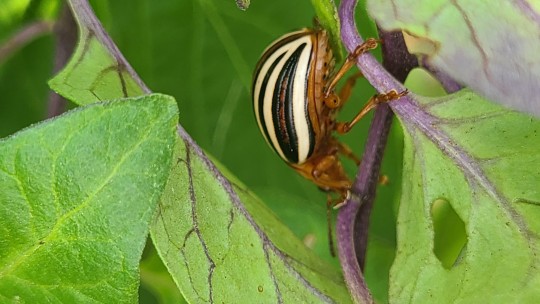
And then one I went looking for, because of beautiful photos from @ahedderick and others, the dogbane beetle. I was like, wait, I have acres of dogbane, do I also have magic Shiny Beetles? And I do.

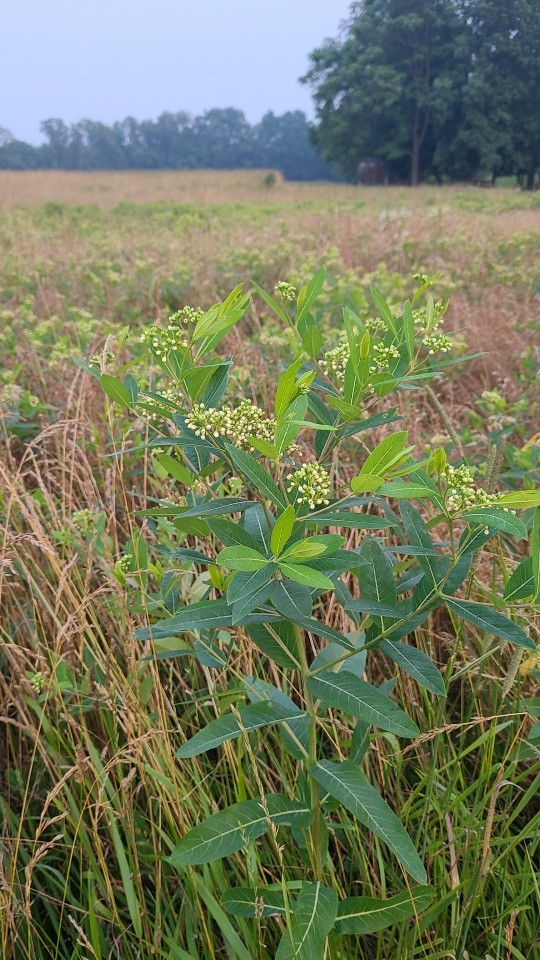

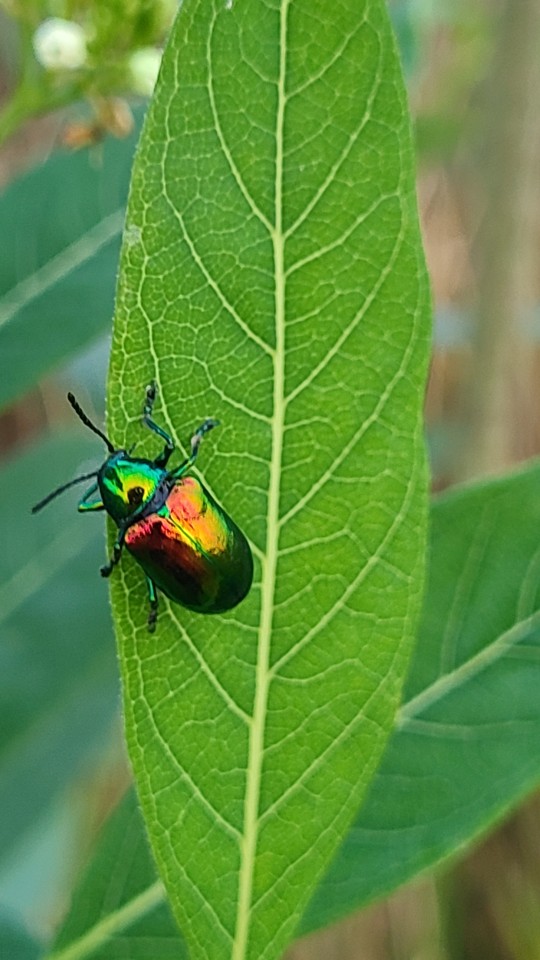
They are really something special!
20 notes
·
View notes
Photo
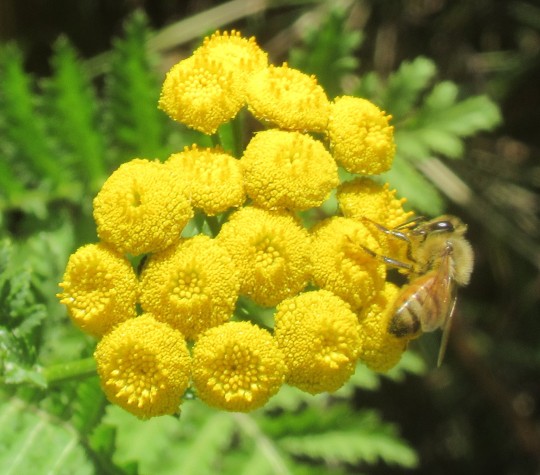


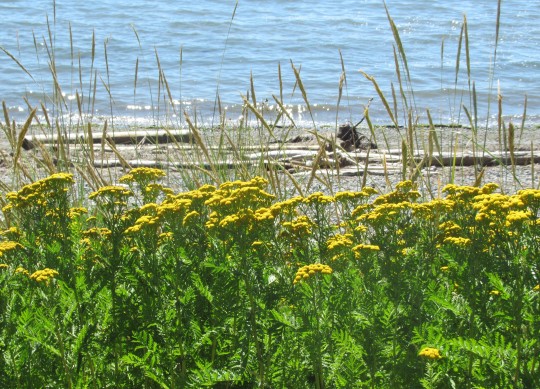
Tanacetum vulgare (common tansy) and Apis mellifera (European honey bee or western honey bee)
Halloween
Today is All Hallows’ Eve so this might be a good time to do a post on common tansy. In ancient times, this plant was used in the winding sheets of the dead and a wreath of tansy was placed on top of the dearly departed. Tansy is an effective insecticide and no doubt reduced decomposition.
Tansy is native to Siberia and it was first brought to Europe by Alexander the Great. The Greek physician Galen recommended it for a variety of diseases and as a way to balance the four bodily humors. In medieval Europe it was used for everything from curing intestinal worms in children to inducing abortions and treating epilepsy. Luckily, all these bogus cures were swept away by the Scientific Revolution. In high doses, common tansy is deadly poisonous.
Tansy seeds were brought to the New England Plymouth colony by John Winthrop Jr in 1631. It now grows in every part of North America except the harshest deserts. It repels many types of insects including ticks and flies, and has been used to discourage the Colorado potato beetle (by surrounding potato fields with mass plantings). However, this honey bee doesn’t seem to mind its fragrance. After all, nectar is nectar, and to a honey bee, it all tastes good.
#flowers#photographers on tumblr#tansy#Halloween#gardening#fleurs#flores#fiori#blumen#bloemen#Vancouver
73 notes
·
View notes
Note
Revretch I am back with more made up bio questions, what would it take to make a beetle (true beetle!) to be like, a MASSIVE threat of an invasive species across all environments but its own native island? Basically I have this beetle that eats a lot, but on its own island this isn't an issue because the grubs are eaten up when they're still in the ground and population is kept low. I wanna know how I could make this the most fucked up invasive beetle possible because it's extremely useful for medicine which has created a black market for it, and I think as dungeon master I can have my players do a lil environment mission, as a treat for me
Well, it's not just a matter of how much it eats, it's a matter of what it eats. Any important crop--or several--being targeted by a particularly prolific beetle spells trouble.

The khapra beetle is one of the 100 worst invasive species in the world. It infests all kinds of grains, cereals, rice, dried beans, seeds, etc. etc. It can survive long periods without food or water, and is resistant to many insecticides. It can also cause horrible allergic reactions.
It's also a matter of how prepared the people in those environments are for it.
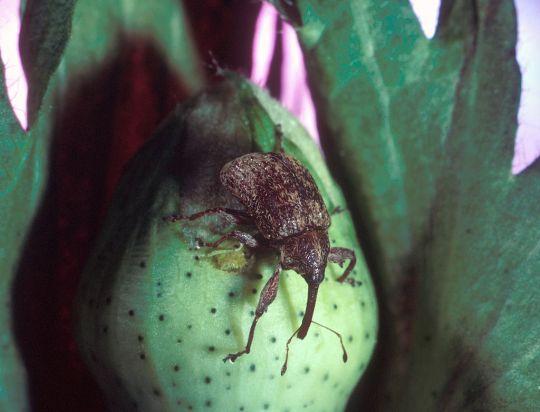
Before pesticides, boll weevils were a tremendous problem (and still are, though to a lesser degree). The effects of their devastation of cotton crops decimated much of the American South's economy and substantially altered American history. Even now, according to Wikipedia, 90% of Brazilian cotton crops are infested by them.
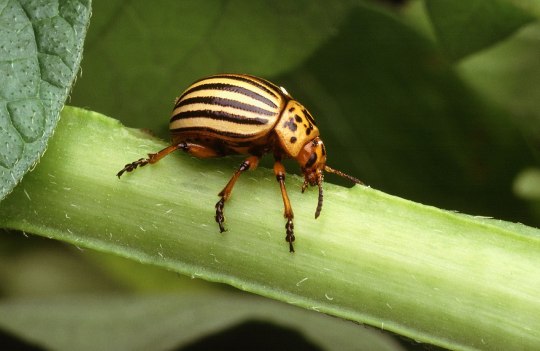
There's also the Colorado potato beetle. After WWII, nearly half of all potato fields in East Germany were infested by it. Again, pesticides helped. (Though, of course, at a horrifying environmental cost, but that's another discussion.)
So, really, you just need to figure out which crops are the lynchpins of your setting's societies, and have the beetle pull that out from under them. Being as invulnerable as the khapra beetle is a bonus. For extra tenacity, you could even make its diet as diverse as the mealworm's--they can get by on styrofoam.
28 notes
·
View notes